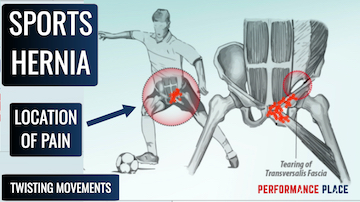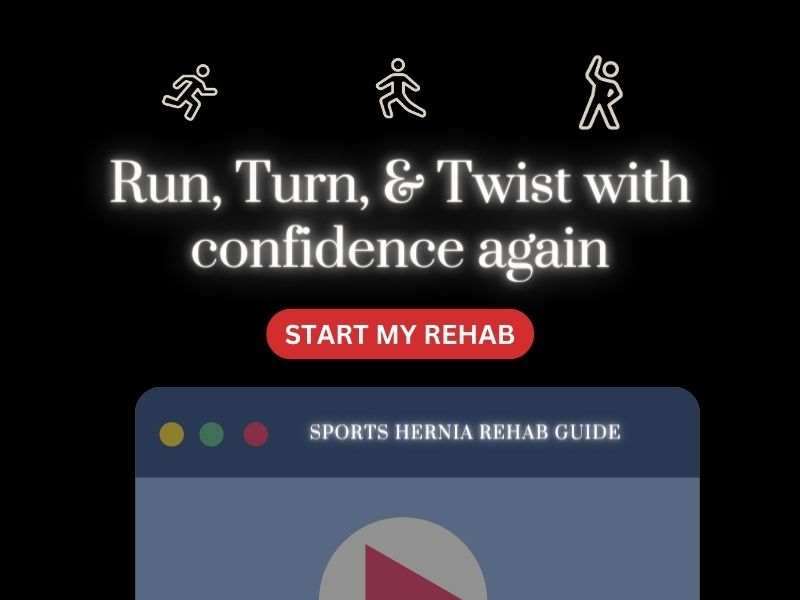Sports Hernia
You just struck GOLD with this article.
This article will include the best information about sports hernias, treatments, rehab, and surgical interventions. I wrote this article originally in 2016 (updated in 2018) to compiled the most up to date research-based information for people suffering from sports hernias, all in one place.
To accelerate your recovery, I’ve created a video guide you can preview above.
As we get into some of the treatments available for a sports hernias, it’s always important to ask yourself WHY your groin became irritated in the first place.
Aside from direct trauma, most groin injuries issues are a painful yet regular adaptation to load.
Pain is just an alarm.

Most symptoms are just an alarm that you need to “re-calibrate” how your body absorbs load in human motion.
Building up the support systems for the groin will allow re-calibration to occur, and the abdominal wall will begin to heal itself.
Why are the fascias and tendons of your groin overused and painful?
People use treatments that address pain, swelling, scar tissue, and tenderness as simple ways to modify pain, similar to taking pain medication.
Pain modification is great, but only when coupled with re-calibration of your body weight during athletic motions that frequently re-injure the deconditioned athlete with a deconditioned groin.
Similar to your iPhone (when re-calibrating GPS), groin pain is the body asking to redistribute load. In this case, away from the groin.
Re-calibration is simple to do, yet most athletes require a little guidance in finding their way… hence the reason I made Volume 1 of My Sports Hernia Course.
It should be your starting point to re-calibrating your groin’s loading strategy.
The course is the most efficient way for me to guide you to the rehab exercise videos you’re looking for (ethical guidelines in the medical world restrict doctors from recommending direct care without examination).
I included some videos of methods we use in the clinic with high success in this article as a way of “unveiling the curtain.”
I want you to see that recovery from a groin issue is not magic and closer than you think.
The videos in this article are great and work sometimes but not all of the time. In my 10+ years of practice, I started to learn more effective corrective exercises to accelerate recovery for my clients.
Many of the videos in this article will work BUT to be honest, the newer stuff works FASTER.
I started to compile video references in this PDF for my patients to use as “refreshers.” You can access them through Volume 1 of my Sports Hernia Course as well.
For those of you who are not sure about the program but want to learn more, I just created this eBook to help “Demystify” the sports hernia… since there is not thing about it on the Internet.
It’s called Understanding Sports Hernias: Unveiling The Mystery Behind Groin Pain in Athletes. Here is a link.
What’s a realistic recovery timeline for groin pain?
Most people I see with inner groin pain follow this rough spread of recovery times (every case is unique):
- 1/2 tend to regain their ability to run, change direction, jump and squat within a 30 minute intervention
- 1/4 tend to have a slower recovery, yet are cleared to resistance train, do agility drills, and sprint work performed as “pain-free reps.”
- The last group is usually more chronic and has neglected their symptoms for months/ years. Regardless, they are typically cleared to resistance train, do core work, and walk long distances.
Enjoy the article, happy recovery, and if you’re in Southern CA, come in to see me to accelerate the process! Make an appointment.
Dr. Sebastian Gonzales DC, DACBSP®, CSCS – Head Clinician Performance Place Sports Care, Huntington Beach, CA
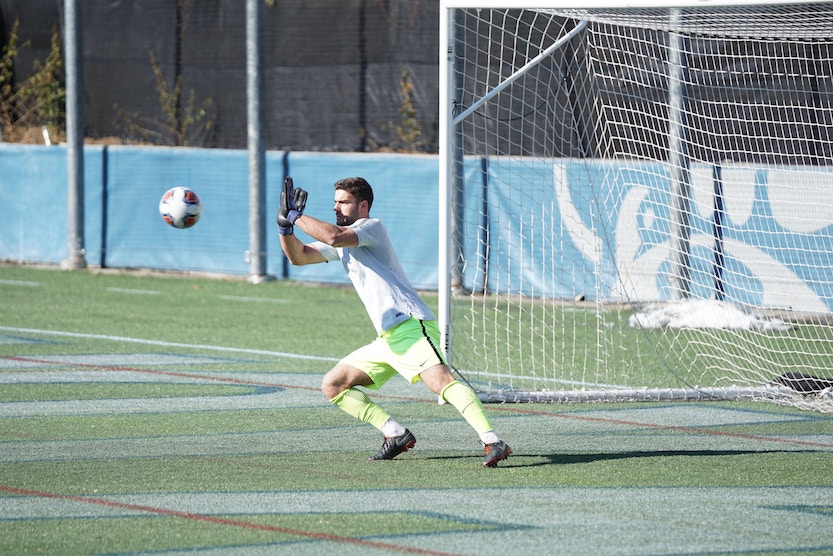
Sports Hernia Truths 1-3
Sports Hernia Truth #1
Sports Hernia’s Often Occurs In Sports With Cutting, Pivoting, Kicking And Sharp Turns.
- Soccer
- Football
- Tennis
- Rugby
Poor movement quality in sports with quick changes in direction can overload the tissues in the groin and eventually can lead to a small painful tear over time. Improving the support for the groin, the hips and core, are required for high movement quality.
Sports Hernia Truth #2
Sports hernias have a slow onset, which means it is not traumatic.
- Nobody has to hit you.
- You don’t have to fall.
- You don’t have to hear a pop.
- It occurs slowly, meaning it is very preventable.
Sports Hernia Truth #3
Pain is one-sided (unilateral) around the groin/pubic bone.
The pubic bone is the bone at the very bottom section of the abdominal area. Many muscles of the pelvis and abdominal area attach here. Pain is usually only on one side, so if you have pain on both sides you could have another injury type.
Sports Hernia Truth 4-6
Sports Hernia Truth #4
Pain can radiate to the upper thigh.
“Referred pain” happens with many different types of conditions. Even injury to an organ like the heart can create radiation of pain. Sports hernias refer to the front of the thigh and into the quad muscles.
Sports Hernia Truth #5
The pain associated with a sports hernia is “hard to pinpoint.”
Not being able to find the source of pain is extremely common and a very characteristic symptom of a sports hernia. If you cannot locate the apex of the injury yourself, you should investigate the possibility of a sports hernia.
Sports Hernia Truth #6
Scrotum pain or tightness can also occur in some cases.
Obviously, this is just for the guys. I have heard athletes say it feels “tight” or “numb” even into the ball sack. Other conditions can also yield tightness into the scrotum, but this is a classic one found in athletes with sports hernias. Don’t ignore this one.
Sports Hernia Truths 7-9
Sports Hernia Truth #7
Other AKAs for a Sports hernia are:
-
Sportsman’s Hernia
-
Athletic Pubalgia
-
Gilmore’s Groin
Sports Hernia Truth #8
Top 4 diagnosis it can be confused with are:
-
Adductor Longus Dysfunction
-
Osteitis Pubis
-
Hip Joint Pathology
-
Hernia
If you genuinely want to know your correct diagnosis, you’ll need some advanced imaging. I go through that in more detail later in this article.
Sports Hernia Truth #9
Dynamic Musculoskeletal Ultrasound (MSUS) can confirm the diagnosis.
An ultrasound is one of the best ways to know precisely the injury you have. I know that might surprise you, but it assists us in recommending the right treatment plan for you.
Sports Hernia Truths 10-12
Sports Hernia Truth #10
Rehab can be slow, frustrating and even unsuccessful. Bummer huh? That’s the nature of the beast if you have a TRUE sports hernia.
Rehab can be very slow but the great news is if you rehab and it is a fast recovery you probably had something else, what I would classify as a “pseudo-sports hernia.”
You could have had hip impingement, hip flexor tendonitis, light nerve impingement, a spinal disc issue and much more.
To figure out exactly why my patient are experiencing groin pain, it requires about an hour and half of conversation, testing and trail/ error corrective exercise recommendations. In my experience, less than 1/4 of the self diagnosed “sports hernia” cases are actually a sports hernia.
Even more of a reason to confirm your diagnosis!
Sports Hernia Truth #11
Rehab may include:
- 6-8 weeks modified play
- Pain Modifying Modalities (ice, heat, electrical stimulation, etc)
- Sports Massage/ Deep Tissue Work
- Core Endurance Exercises
- Breathing Exercise For Intra-Abdominal Pressure “Recalibration”
- Progressive Hip Strengthening
- Hip Mobility Exercises
- Correction And Gradual Loading Of Movement Patterns (squats, deadlift, push, pull, carry)
- Unilateral Training With An Anti-Rotational Consideration
- Graded Exposure To Sports Specific Movements
- Gradual Return To Play With At-Home Progressive Rehabilitation
Sports Hernia Truth #12
Surgery is suggested if rehab is unsuccessful.
The great news is surgery can be extremely successful but I would caution to not jump in too fast.
A successful sports hernia surgery would be an unsuccessful surgery on a hip labrum or other conditions that could also be causing your pain. Read the rest of the article to find out how we can confirm a sports hernia…
Sports Hernia Rehab Program (Actual Results)
The key with a sports hernia rehab program is to rebuild the other areas of the abdominal region to better support the strained area.
In a span of 8 weeks, you can rehab a sports hernia injury with our online program:
Here’s Why You Shouldn’t Wait to Start Your Recovery
It took Charles Moody 14 months of frustration and discomfort with his Sports Hernia injury until he found this guide, and just 8 weeks to start feeling better.
I found amazing results with this program! Honestly, it is the only rehab that has worked for me beyond resting (which eventually didn’t work), and I had tried everything available to me.
I am a track and field athlete and I compete in the decathlon. I was practicing the hurdles one day in December 2019 and at the end of practice I noticed my groin was unusually sore. It slowly became worse and eventually led me to see a doctor. I was diagnosed with a sports hernia in February 2020 and was told with physical therapy and rest I should recover within 4-6 months. One good thing about the pandemic is that I had time to recover without missing any competition, but after about 2 months I hit a plateau in terms of recovery. I did 2 months of physical therapy and eventually didn’t notice any improvements. In November/December 2021 I finally decided to just rest, instead of trying to still do tolerable activity. By the beginning of January I noticed a slight improvement, but I could still tell the groin discomfort was there. As I was in a last-ditch google search effort I found your program which was a beacon of hope.
I was attracted to the program due to the non-conventional methods of recovery. The breathing and emphasis on being mindful during the exercises is unique and I find it helpful. I feel this is something mainstream exercise and athletics lacks.
I no longer feel pain with putting on my socks or sneezing. If I squeeze my adductors really hard my right groin still feels different, but there isn’t pain like before. I am trying to “add to my bank account and not make withdrawls”. It’s hard because when I feel better I want to test it but I am refraining for at least these 8 weeks. I am still hopeful to make a full recovery so I can sprint and jump again. This program has been the game-changer for me; I wish I could see what would have happened if I started it earlier on in the injury process.
What Is A Sports Hernia?
A sports hernia is tearing of the transversalis fascia of the lower abdominal or groin region. A common misconception is that a sports hernia is the same as a traditional hernia. The mechanism of injury is rapid twisting and change of direction within sports, such as football, basketball, soccer and hockey.
The term “sports hernia” is becoming mainstream with more professional athletes being diagnosed. The following are just to name a few:
- Torii Hunter
- Tom Brady
- Ryan Getzlaf
- Julio Jones
- Jeremy Shockey
If you follow any of these professional athletes, they all seem to have the same thing in common: Lingering groin pain.If you play fantasy hockey, this is a major headache since it seems so minor, but it can land a player on Injury Reserve on a moment’s notice. In real life, it is a very frustrating condition to say the least. It is hard to pinpoint, goes away with rest and comes back after activity, but is hardly painful enough to make you want to stop. It lingers and is always on your mind. And if you’re looking for my step-by-step sports hernia rehab video course here it is.
One the best definitions of Sport hernias is the following by Harmon:
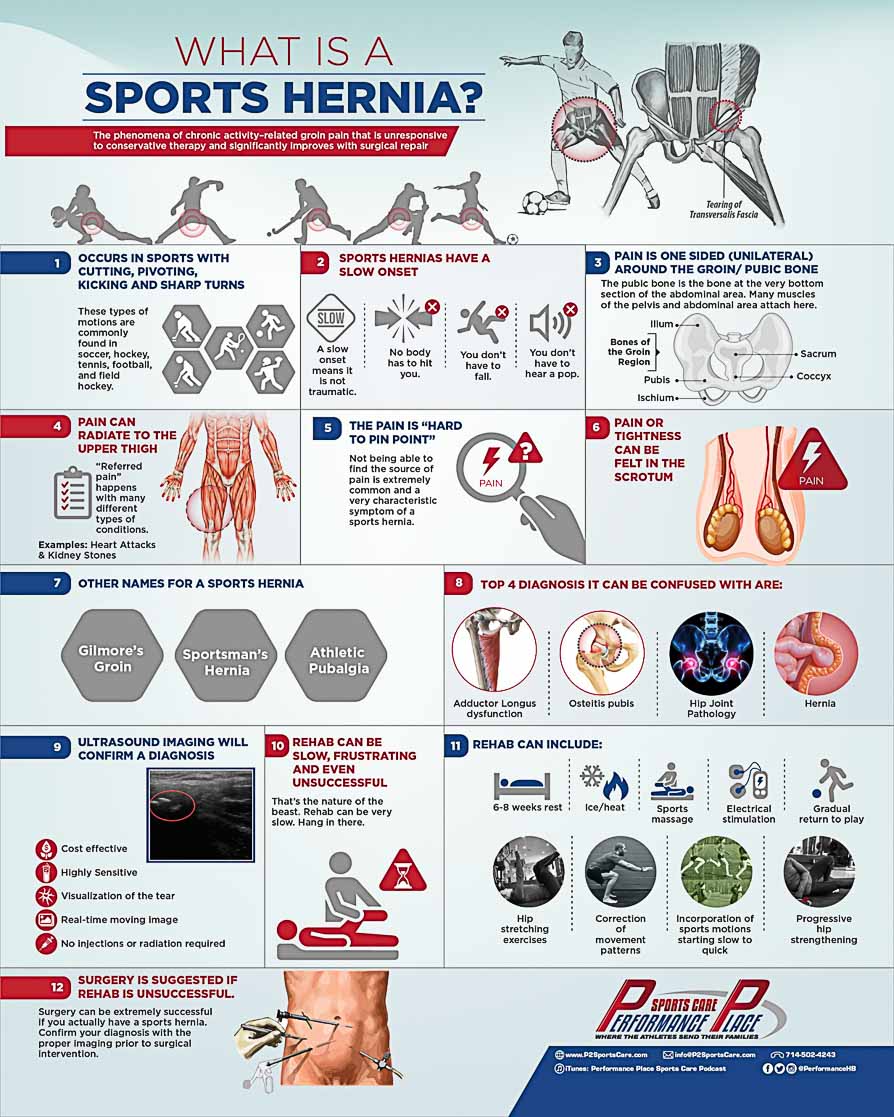
“The phenomena of chronic activity–related groin pain that is unresponsive to conservative therapy and significantly improves with surgical repair.”
This is sports hernias have behaved in a clinical setting historically. It is not uncommon for a sports hernia to be unrecognized for months and even years. Unlike your typical sports injury, most sports medicine offices have only seen a handful of cases. It’s just not on most doctors’ radar.
The purpose of this article is not only to bring awareness about sports hernias, but also to educate the reasons why a sports hernia may not respond to physical therapy or corrective exercises
Logically we may come to the assumption that the sports hernia diagnosis may be wrong if it’s not responding to a good physical therapy program.
Sadly many people have the same frustrating story.
They have seen a doctor who ruled out a hip labral tear, hip impingement and an inguinal hernia. They conducted an ultrasound to “see” the sports hernia, but it is inconclusive. Or perhaps they have had an MRI that shows nothing.
Now what?
There are a few situations that can mimic a sports hernia, even after all of the other diagnoses have been ruled out.
- Ilioinguinal nerve compression
- Genital branch of the Genitofemoral nerve compression
Both of these nerves originate from the upper lumbar spine, which could be the root of the whole situation. We will get to how we can treat this later in the article. For those of you who can’t wait, watch this Youtube video I did as a self test for this situation.
For those of you who want to learn about true sports hernias, it’s all in this article. I got it all!
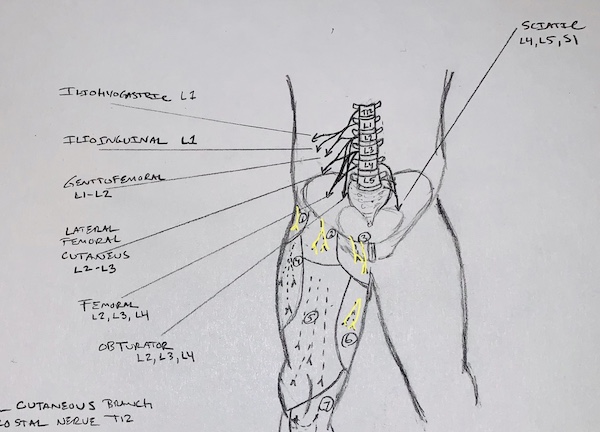
Will you find quick fixes in this article for sports hernia rehab?
Nope. There is no quick fix for this condition, and if someone is trying to sell you one, they are blowing smoke up your you-know-what.
Is there a way to decrease the pain related to sports hernias?
Yes. Proper rehab and avoidance of activity for a certain period of time will assist greatly, but this will not always stop it from coming back. Pain is the first thing to go and last thing to come. Do not be fooled when you become pain-free by resting it. Pain is only one measure of improvement in your rehab.
Strength, core muscle endurance, change of direction, balance and power (just to name a few) are important, since you obviously desire to play your sport again. If you wanted to be a couch potato, you would be feeling better in no time. Watching Sports Center doesn’t require any movement.
Why is this article so long?
There is a lot of information on sports hernias available to you on the web. However, much of the information is spread out all over the internet and hard for athletes to digest due to complicated terminology. This article lays out the foundational terminology you will need to understand what options you have with your injury. We will go over anatomy, biomechanics, rehab, surgery, and even the fun facts. The information I am using is from the last ten years of medical research, up until 2021. We will be making updates overtime when something new is found as well. So link to this page and share with friends. This is the best source for information on sports hernias you will find.
[eBook] Understanding Sports Hernias: Unveiling The Mystery Behind Groin Pain in Athletes
Original price was: $47.00.$17.00Current price is: $17.00.
Description of this eBook
There is a lack of information on the internet about sports hernias. Let’s demystify the sports hernia together!
There are a lot of reasons you may be experiencing lower abdominal pain, groin pain, hip stiffness, genital tightness and adductor tightness. There are many reasons for lower back or SI joint stiffness or pain as well. A sports hernia is only one reason.
Sports hernias can be a perplexing condition for both athletes and medical professionals alike. Despite being a common source of groin pain, there is a surprising lack of information about sports hernias on the internet.
In this ebook, we will explore the nature of sports hernias, their misnomer, differential diagnoses for similar symptoms, the recovery process, treatment options, and the role of various factors such as core stability and breathing mechanics.
Why is there such a lack of information about sports hernias on the internet?
The scarcity of information about sports hernias on the internet can be attributed to various factors.
Firstly, the term "sports hernia" itself is a misnomer, leading to confusion and difficulty in accurate diagnosis.
Secondly, the symptoms of a sports hernia can overlap with other conditions, making it challenging to distinguish and classify.
Thirdly, even in research publications the term sports hernia is used interchangeably with abdominal hernias.
Lastly, the evolving understanding of sports hernias within the medical community may contribute to the lack of consolidated information.
Common Names (or Aliases?) for Sports Hernias
- Sportsman’s Hernia
- Athletic Pubalgia
- Gilmore’s Groin
How Do You Know If You Have A Sports Hernia?
- Typical athlete characteristics:
- Male, age mid-20s
- Common sports: soccer, hockey, tennis, football, field hockey players
- Motions involved: cutting, pivoting, kicking and sharp turns
- Gradual onset
Anatomy of a Sports Hernia
Bones of the Groin Region
- Ilium
- Ischium
- Pubis
- Sacrum
- Coccyx
- Femur
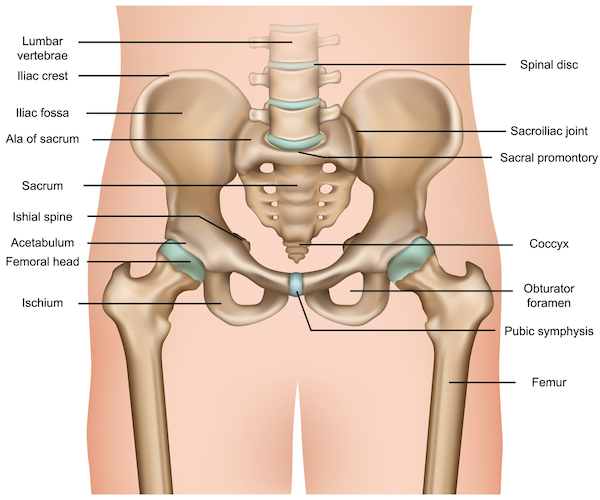
Joints of the Groin
- Public Symphysis
- Femoroacetabular Joint
- Sacroiliac Joint
Cartilage of the Groin Region
- Public Symphysis
- Acetabular Labrum
- Hip Articular Cartilage
- Sacroiliac Joint Articular Cartilage
- Triradiate Cartilage Complex
Ligaments of the Groin Region
- Inguinal Ligament
Muscles that attach in Groin Region
- Adductor Longus
- Transversalis Fascia
- Rectus Abdominis
- Internal Oblique
- External Oblique
- Iliopsoas
- Rectus Femoris
- Pectineus
- Adductor Brevis
- Adductor Magnus
- Gracilis
- Tenor Fasciae Latae
- Piriformis
- Gluteus Medius
- Gluteus Maximus
- Biceps Femoris
- Semitendinosus
- Semimembranosus
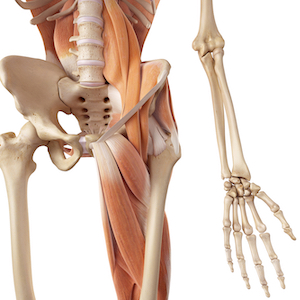
How A Sports Hernia Develops
Chronic groin pain typically happens over time, which is why with sports hernias, we do not hear many stories of feeling a “pop” or a specific moment of injury. It is thought to be the result of “overuse” mechanics stemming from a combination of poor strength and endurance, lack of dynamic control from the hip and core muscles, movement pattern abnormalities and discoordination of motion in the groin area.
There is a lot going on in the groin area. There are a lot of muscles, tendons and fascia pulling in different directions. Many of these muscles and tendons attach to the pubic bone, which is the location of pain. These contracting structures need to coordinate together for any athletic motion, such as a skating motion of a hockey player or the kicking motion of a soccer player
This is also known as the injury prevention model.
Over 100 research articles on sports hernias point to the “overuse” model as being a probable cause of the injury 13, which also means it is preventable.
We believe it is a secondary level injury.
Repeated shear force coming from the hip adductor pulling against a weakened groin region (internal oblique and transversalis fascia) lead to a sports hernia.
“So you’re saying strengthen the core muscles?
Not exactly. The core muscles are important but it’s better to think of the area as a “complex.” Everything works together. This includes the hip. Your core muscles include your internal oblique, external oblique, multifidus, quadratus lumborum, rectus abdominis, diaphragm and transversus abdominis to name a few. Hip range of motion has been found to be associated with chronic groin pain and injury to above named abdominal structures. 4,14,15
“So we need to stretch the hip?”
Maybe, but more so, just remember that your sports hernia was not an accident. It was not bad luck, because it is a preventable injury. We can test hip range of motion and strength. We can look at how well or poorly you move. How well you squat, lunge, and change directions on the field. These can all be tested in physical therapy or a rehabilitation clinic.
Sports hernias, like most “overuse” sports injuries, are in theory preventable if we correct your “problem areas” before the injury begins.
Entheseopathies (inflammation of the tendinous attachment to the bone) can also be found in many groin pain patients. This means this is not a “new” condition. It happens over a period of time and taking preventative steps should not be neglected. Muscles and tendons that attach to the public bone become overused and stress due to poor function of the rest of the core and hip regions.
Prevention is thought to be possible by using the trained eye of a physical therapist, sports chiropractor or strength coach to address non-painful movement dysfunctions before they become painful conditions. We call this protocol “prehab.”
Sports Hernia Symptoms
- Unilateral groin pain that can radiate to the area between the genitals and anus or the upper inner thigh
- Pain radiating to the scrotum and testicles
- Seems like an inguinal hernia without the mass
Other Possible Diagnoses
Want to know if you have a sports hernia for sure?
It’s tougher than you would think.
As of 2016, when this article was originally written, we still didn’t know exactly how to test for a sports hernia with an orthopedic test. Orthopedic tests can be as simple as a muscle test or moving a joint in a doctor’s office.
Now we have a better idea of the regions to test, as well as a better way of ruling out other conditions that could make rehabilitation more complicated. In this Youtube video, I share my exam for a sports hernia.
Testing for sports hernias can require more than one test to diagnose, and oftentimes, require an image to be taken. The area of injury is so dense with structures which could be the pain generator, it is hard to isolate each via orthopedic or muscle testing.
For groin pain, we have to consider these diagnoses:
- Hip impingement
- Hip Flexor Syndrome
- Ilioinguinal nerve compression
- Genital branch of the genitofemoral nerve compression
- Adductor Longus dysfunction
- Osteitis pubis
- Sports Hernia (aka sportsman’s hernia)
- Hip labral tear
- Hip arthritis
- Inguinal Hernia
Imaging A Sports Hernia
These tests can assist greatly in ruling out some of the other possible conditions. Still, they do not always confirm a sports hernia. Some imaging options are listed below with the pros and cons of the imaging type:
Plain radiograph (x-rays)
Computed Tomography Scan (CT Scan)
Magnetic Resonance Imaging (MRI)
Magnetic Resonance Arthrogram (MR Arthrogram)
Musculoskeletal Ultrasound (MSMU or MSKUS)
Plain radiograph (x-rays)
X-ray is the typical beginning step in the imaging series for a variety of reasons. X-rays are great at assessing the cortical surface of the bones (the shell) and the alignment of the bony structures. They can reveal suspicion of soft tissue damage. Still, they only reveal a small fraction of what other types of imaging can see. For a complete assessment of the region’s muscles, tendons, ligaments, fascia, cartilages, and other structures, we need to use images better equipped to key in on the specific densities of each.
In groin pain cases, x-ray is great at confirming findings such as:
- Pubic symphysis widening and erosions
- Local fractures
- Bone disease
- Healing of possible stress fractures
Computed Tomography Scan (CT Scan)
CT scans are beneficial for in-depth evaluation of bone injuries. A CT scan will show everything an x-ray does but in more detail. Why do we not start with the CT in the first place then? Cost is one factor. In the medical field, we do make every attempt to keep the cost as low as possible for each patient. Imaging can be one of the most costly things done in the process of diagnosing the cause of your groin pain.
Second, the machinery to create the image is expensive and much more complex than an x-ray. An X-ray will reveal useful findings, and you will get one done much faster than a CT. Third is the issue of radiation exposure. Radiation is one of the significant hang-ups of using CT scans. Too much radiation exposure is not good. When x-rays were first invented, they were helpful for some skin conditions and used as a treatment for them.
Long story short, we found decades later that was a bad idea. Now, there are restrictions on how much radiation is allowed for each patient to have in a year. Some estimates say CT scans have around 100 times more radiation exposure than x-rays but don’t quote me on that exact number. For groin pain, CT scans can be useful in seeing:
- Stress Reactions (note: they differ from stress fractures)
- Inflammatory processes
Magnetic Resonance Imaging (Sports Hernia MRI)
A sports hernia MRI is very useful in the evaluation of the soft tissue in the groin area. Using it it can look at the muscle tendons as they attach to the pubic bone. Using MRI, we are also better at predicting recovery time if there is a positive finding MRIs can also help to narrow down a more precise treatment plan. With this type of image, we can really start to understand the nature of your groin pain: is it simple or more complex? A sports hernia MRI can assist us in ruling out some aspects of the injury and confirming others.
MRI can assist us in confirming:
- Muscle strains
- Stress reactions
- Labral tears
- Osteitis pubis
- Iliopsoas bursitis
- True hernias
- Occult stress fractures
Some negatives about using a sports hernia MRI are cost and speed of obtaining the procedure. Cash is king, and if you are ready and willing to shell out some big bucks to know more about your injury, you can have the image performed today.
Notice you do not see the two big secret diagnoses I started the article with on this list. Having an MRI can be also useless for seeing compression of the Ilioinguinal nerve and the genital branch of the genitofemoral nerve. Confirming these two come with a hands on evaluation.
Do you need other types of imaging?
Probably not. X-rays and CT scans are fantastic at bony evaluation, but a sports hernia MRI is very good at the evaluation of the soft tissues that aren’t clear on those types of imaging, and it’s pretty darn good at the evaluation of bone as well. If you have been waiting for an insurance company to approve an MRI, I would not hold your breath. In some cases, it can be fast, but in others, it can take months. Months of downtime, uncertainty, and pain are considerable downsides to waiting on your insurance to cover an MRI.
- Are you willing to wait this long?
- How badly do you want to know about your groin pain?
- How badly do you want to play again this year?
Again, if you want a sports hernia MRI, just pay the money. If the most significant barrier to your happiness and sanity is money, just spend it. It will be money well spent.
Is a sports hernia MRI the most cost-effective type of imaging for a sports hernia?
Not really. So, don’t think I am pressing you to pay for an MRI. Musculoskeletal Ultrasound is a fraction of the cost and very diagnostic. However, a timely image can cost money. Again, just allocate the money from other luxuries like cell phones, movies, dinner, and drinks so that you can have direction in your rehab. I have had to have the hard talk about priorities with many patients.
- What do you value most in life?
- Your health or your belongings?
Sorry, we got off-topic. Let’s get back to the imaging!
Magnetic Resonance Arthrogram (MR Arthrogram)
MR Arthrogram is the gold standard for the evaluation of the internal structures of the hip. If we ordered this type of image, we would be looking for a possible hip labral tear. Pain can refer from the hip/labrum and create the presentation of a sports hernia. The correct diagnosis would assist in formulating a treatment plan or possibly recommending surgery.
Labral tears and sports hernia injuries require very different surgeries. If a surgeon corrects the wrong thing, you will leave the surgery with the same pain that brought you there to start. An MR Arthrogram is more expensive than a standard MRI because we are working with contrast dye now. The dye inflates the joint spaces and creates a great visualization of the internal structures of the hip joint.
Does this mean an MR Arthrogram can confirm a sports hernia?
No. But, it can rule out a major injury that presents like a sports hernia.
Sports Hernia Musculoskeletal Ultrasound (MSUS or MSKUS)
Last, but not least, is the Musculoskeletal Ultrasound. It is a newer technology in comparison to the previous ones we’ve discussed. One important thing to point out is that it is the most cost-effective, best bang-for-your-buck type of image for groin pain. Still, it cannot see any bony damage that might be there as well. What can it see?
- Muscle strains
- Hip joint effusion (helpful in ruling in a possible labral tear)
- Osteitis pubis
- Iliopsoas bursitis
- True hernias
- Stress fractures
Here’s an Ultrasound of a Sports Hernia. There was a high school soccer player who had experienced groin pain for the past six months. Pain was on the left pubic bone. She said it came and went with her activity level. The imaging reports stated, “Athletic pubalgia strongly suggested.” Note the apparent difference to the pubic bone on the left side (first image) vs. the right (the second image). This abnormality is at the adductor tendon insertion and appears to have been going on for a long time. It was not a new injury at all!
Note on the obvious difference to the pubic bone on the left side (first image) vs the non-painful side (the second image). This abnormality is at the insertion of the adductor tendon and seems to have been going on for a long time. This was not a new injury at all.
“What I would recommend as a comprehensive study package for groin pain would be: 1)an x-ray series, to rule out bony injury, and 2)MSUS to rule in any soft tissue damage, including a sports hernia.”
What I would recommend as a comprehensive study package for groin pain would be an x-ray series, to rule out bony injury, and MSUS to rule in any soft tissue damage including a sports hernia. Yet again you won’t be able to see the Ilioinguinal nerve and the genital branch of the genitofemoral nerve. Confirming these two come with a hands on evaluation. You should just let us do that for you. 🙂
Musculoskeletal Ultrasound is the only image of the bunch that is a dynamic assessment study, meaning that we can see a sports hernia in action. As the patient actively strains, the ultrasound probe sees real-time bulging and ballooning of the inguinal canal. It can also see posterior inguinal wall deficiency. However, the education and experience of the person performing the exam is a significant variable. MSUS is very user-dependent, and you must find someone qualified to perform the examination.
Don’t know how to find someone qualified?
Ask around. Finding an excellent musculoskeletal ultrasonographer is tough, and primary education in sonography school is usually not enough to perform the exam. However, schools are beginning to add musculoskeletal examination into the curriculum.
Two great people in Southern California who I respect very much are Dr. Michael Meng, in the San Diego area, and Michael Jablon in Beverly Hills.
Sports Hernias Treatment & Rehab
Over my years successfully treating and rehabilitating players with groin pain, we have only found 3 true sports hernia cases CONFIRMED with an ultrasound. The funny thing is that we have hundreds of people come in every year with the diagnosis of a sports hernia.
In this section allow me to share the process that works for us at Performance Place. At any point if you feel motivated to work with us 1-on-1, just reach out via this contact form. We also have an online program that shows some steps we take.
I’d rather share what is working versus what has not been working but published research over the years.
Step 1: Cool it down
- Frogs pose
I know it sounds general but it tends to address the groin pain from various angles. If it was from the nerve compression I mentioned, this may help by opening some holes in the spine. It should generally feel like “no-effort or pain” in this position.
Next we go to skin rolling created by Justin Dean and Phillip Snell as Dermal Traction Method. Here is a video that shows how we use it for groin pain.
Step 2: Glute Primers
We like to use the low diagonal sit exercise that we show here. We have lots of other ways to do this if this exercise is too complicated to do. It should not be painful.
Step 3: Core muscle stiffness – Isometric
We normally do this only in the situation that we have had success with the other steps. If this was a true sports hernia, we may not want to load the belly wall too much just yet based upon the severity of symptoms.
Step 4: Hip Strengthening
Split squats tend to work very well in this situation. Depth and weights used may need to change. I will not be showing this on this article since if you are in this situation you have no reason to go advanced steps without the baby steps.
Find the easy wins first. When you cool it down and then build things up in a strategic way good things happen. The reason why many people have a flare up once they start to play again is because they have never really been challenged in their physical therapy or rehabilitation program. The body is not fragile and it will adapt to what you throw at it.
Rehab may include:
- 6-8 weeks modified play
- Pain Modifying Modalities (ice, heat, electrical stimulation, etc.)
- Sports Massage/ Deep Tissue Work
- Neurodynamics
- Lumbar Disc Treatments
- Core Endurance Exercises
- Breathing Exercise For Intra-Abdominal Pressure “Re-calibration”
- Progressive Hip Strengthening
- Hip Mobility Exercises
- Correction And Gradual Loading Of Movement Patterns (squats, deadlift, push, pull, carry)
- Unilateral Training With An Anti-Rotational Consideration
- Graded Exposure To Sports Specific Movements
- Gradual Return To Play With At-Home Progressive Rehabilitation
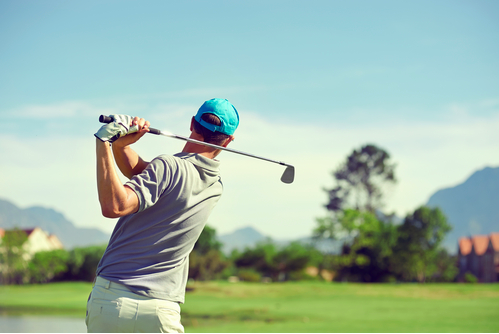
Do I agree with these sports hernia treatment & rehab styles?
Not 100%. My personal opinion after reading about the consistent failure of “traditional sports hernia therapy,” I can’t help but think… what’s missing, which is why I search for stuff that works
Hear me out; there’s a ton of research on how to rehab a disc injury (as well as many other types of torso/ groin conditions), so most rehab experts have great results with these types of cases. I personally feel very confident that if a disc injury or sciatica case came into my facility that I can help his person, at least a strong majority of the time.
How long it takes to return to full function is dependent upon the person and the severity of the condition, but regardless, I KNOW if I can help this person beyond reasonable doubt.
Why can’t we say this about hernia treatment & rehab?
I think it’s because we are just addressing the symptoms of another issue. I can say with much confidence that these happen because there’s a lack of proper function of the “supporting cast” in the abdominal region (and ball/socket joints) based on my experience treating other abdominal, torso, or pelvic floor injuries.
You may be thinking a sports hernia is groin pain, so my theory doesn’t apply. If you feel this way, go back and read the section about what a sports hernia is and come right back…
With an oblique strain, we resolve this by allowing the oblique to remodel (mother nature’s work) and build endurance in the supporting regions: intra-abdominal pressure (think a bike inner tube within the belly), co-contraction of all of the abdominal and back muscles, diaphragm, pelvic floor and adequate deceleration of the hip via the muscles of the hip. With a rotation intolerant spinal condition, like a lumbar spine pinched nerve or a disc injury, it’s the same thing. We’ve found reduced diaphragm motion in people with chronic low back pain (Kolar et al. 2012). Research has also started to investigate the correlation between poor hip rotation and sports hernia occurrence. A lack of hip internal rotation often correlates with having a sports hernia (Rambani et al., 2015).
Why would rotation of the hip matter?
With a sports hernia being a rotational/ extension-based injury, we need to have our rotation & extension come from somewhere, right?
Perhaps the region where it’s intended to?
The hip sounds like a good option to me (as well as sections of the thoracic spine). The hip, being a ball and socket joint, is prime for the job, so the fascia of the groin/ torso region doesn’t have to become torn up.
How can we increase hip rotation to decrease symptoms of a sports hernia?
Great question.
The range of motion of the hip is linked to having a stiff torso (McGill 2017). When we’re able to stiffen our torso (inflate the bike tire, co-contract all of the torso’s muscles and the ones that cross from the shoulder), then our hip range of motion improves! AND our ability to generate power from the hip improves too!
Amazing right?!
So you can’t just sit there and stretch when you’re watching Lost! You have to pay a bit more attention to the quality of torso stiffness that will improve your hip internal rotation. Then MAYBE you’ll get to play sometime this year! That’s the theory I base my rehab around, and I haven’t had to send a single groin pain case to surgery yet (at least of the people who followed through with my rehab recommendations).
I’d be lying if I told you that current level one research supported my rehab for sports hernias. Still, the theory is supported for hip impingement, low back pain, adductor strains, glute strains, hamstring strains, sore backs, sciatica, and much more. Since the research is starting to venture into figuring out WHY the transversalis fascia tears in the first place, they have to investigate hip and mid-back rotational deficits and postural endurance within the torso… so I’d like to think they will validate my concepts soon. However, the practices of Dynamic Neuromuscular Stabilization and perhaps Karl Lewit, and many active care sports physical therapist and chiropractors will probably be on board with me here.
I’ve been asked by many people, via email, to share my programming, and I was hesitant for many years, but I finally decided to do so. I was hesitant because the research was lagging (it takes time and funding), and I was pretty scared to share with my fellow docs.
I wish I could say I was the smartest person I know, but I’m not. I feel like I’m learning more and more about how to help people with many different conditions daily, but I guess I’ll share what I’ve found to work well so far. You can find the video rehab course here.
Wonder when you could return to your sport? How long does a sports hernia to heal?
Typically, 12-16 weeks after the start of your care, as long as you continue to be pain free, is a good time frame to attempt activity. It also depends on if you’ve kept some conditioning up. Just because the groin feels better doesn’t mean you’re conditioned to play the sport.
Want to know what rehab exercises we use? We use a variety of rehab exercises to promote muscular balance of the hip and the trunk. Again, the main goal is torso stiffness with the ability to SLOW rotation (anti-rotate) from the hip and the mid-back (amongst other parts of the body). Remember, the body is a single unit. Some people may use the term muscular balance.
What do I mean by muscular balance? Muscular balance refers to the functionality of the muscles, not just muscle size. Are they all working together synergistically? Can they properly propel you forward when you’re changing directions during your sport? To progress you properly to that point, we often have to start with the basics. I read a tremendous technical description of what our goals are in a study recently:
“The rehabilitation emphasis should be placed on resolving core strength, endurance, coordination and extensibility deficiencies and imbalances at the hip and abdominal muscles and on dynamically stabilizing the pelvic ring.” 13
Notice we don’t see a lot of stretching in this quote. We need to focus on improving function from many different angles and not just stretching, so don’t run for the foam roller too quickly. Here are our progressions:
- Isometric to Concentric/Eccentric (safe contractions to less safe)
- Non-loaded to Loaded (i.e., floor exercises then advance to standing, no weight to weighted)
- Endurance to Strength to Power
- Two feet to one foot
- Stable footing to unstable footing
Here are a few of our exercises: TIP: Don’t understand these terms? Listen to this podcast
Here are a few of our exercises we use when indicated, but if you want our step by step for the first eight weeks, you can buy it HERE. Notice that all of the exercises require some type of abdominal/ torso effort. Without building stabilization from the center first, the hip range of motion won’t carry over to the field or daily movement.
Hip Adduction
Remember the Thigh Master? Perhaps they weren’t too far off for sports hernia prevention. But this is an open-chain exercise, meaning your foot is not on the ground. When the foot is on the ground, and we are using ground contact to move us, everything changes. Hence, the squats, deadlifts, and lunges become so important later in sports hernia rehab.
A simple adduction exercise to start with is an isometric one, like a plank. Side-lying hip adduction is a gravity loaded motion we will often use to begin someone. Here’s how you do it:
- Lay on your side with the affected side on the ground
- Split your legs and bring the bottom leg forward just enough so the top leg is not on top of it
- Obtain a stable trunk with proper breathing and bracing methods
- Bring the bottom leg toward the ceiling to a comfortable position
- Hold this position for 5 seconds
- Lower the leg to the ground
- Repeat

Multiplanar Trunk Stabilization
Here is one of the basic exercises we use for multiplanar trunk stabilization. You may have heard of it. It’s called Birddog. The Birddog exercise is fantastic for strengthening and stabilizing the trunk and the hips simultaneously. We often test before we recommend this exercise. If the client is weak in this pattern, we need to strengthen it.
This exercise is for the rehab of several conditions, including low back pain, hip impingement, and knee pain, to name a few. BUT it is also used to create power in athletic movements. I know it is not the power to move itself, but creating a rigid trunk is necessary to transfer power from the legs to the rest of the body.
Here is how we do it:
- Hands and knees. They should be right below your shoulder and hip sockets
- Exhale and dress the rib cage as in the Lewit Exercise queues. This is a stable trunk exercise. Find this stable trunk and stick it
- Slide the leg out. Lead with the heel and drive it through the wall behind you. Note: You’re making yourself “long.” Don’t raise your heel to the ceiling.
- Contract the glutes and hold the leg parallel to the ground
- Slide the opposing arm out, making yourself long. Thumb up.
- Hold this position for 5-10 seconds and slowly switch sides.
We recommend doing this for at least a minute or two. Some things we use to get the form right are balancing a cup of water or a stick on your back. I like the water method. It really slows people down and makes them pay attention to maintaining a “stable trunk” throughout the exercise.
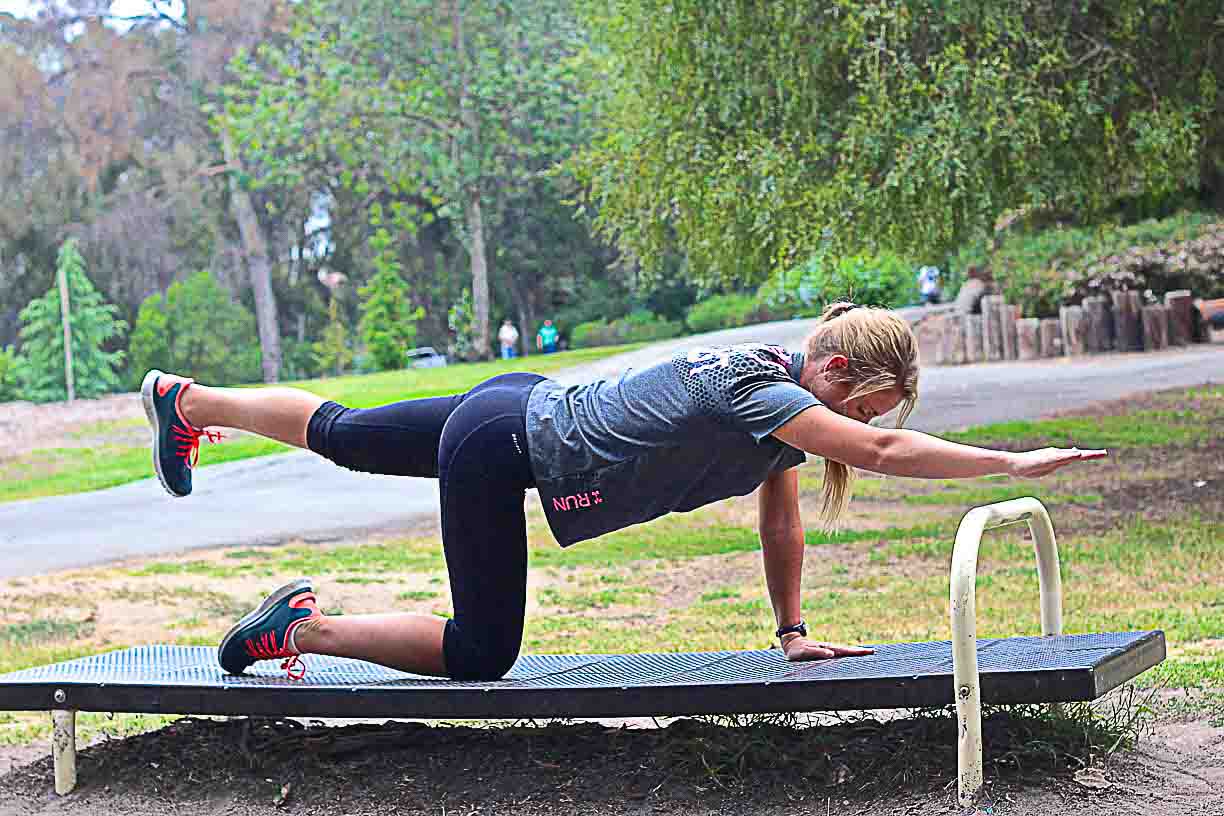
Step Back Lunges
Step back lunges are a great way to add a lunge pattern to a rehab program safely. Even if you have knee issues, these exercises expose the knee to less impact than walking lunges. Do them with or without weight. We often use kettlebells and barbells in a front rack position.
- Obtain a stable trunk with proper breathing and bracing methods
- Step back as far as you can
- Bring the back knee towards the ground, but don’t contact the ground
- With a tall chest, the front knee should bend as well and be positioned just above the ball of the front foot.
- At the bottom, you should pause for 2 seconds to make sure you are stable
- Drive up using the front leg’s gluts.
- Alternate legs

Proprioception Exercises
Proprioception exercise can vary greatly. Rather than write about a specific example, it is best to watch this video.
Change of Direction/Plyometric
This is similar to an ACL prevention course, which we also have on our paid courses, so I cannot give that out here, but there are some sources on YouTube you can use as an idea. This training should take place later in your rehab, so you have time to research a bit before you get here. Know all of the other parts first, and then take our course to learn about change of direction training. We have found conservative care of sports hernias is not exactly a standardized process as of yet.
We feel we have an idea of the necessities for an athlete to work on and improve based upon the structures involved in this injury. Currently, studies giving guidance for evidence-based rehab are lacking. 3,6,7,9
Want to know what we do in our facility for sports hernia rehab? We have the first eight weeks of our rehab process with step-by-step videos available for purchase.
Sports Hernia Surgery Success Rates
Surgery success rates for sports hernias can vary, just as any other surgery. Let’s compare some of the success rates of the two types of sports hernia surgeries: Open and Laparoscopic.
Open Sports Hernia Surgery
The average success rate for open repair is around 92.8% (SD 9.9). 8 35% of open procedures require mesh. 13 83.3% of open surgery athletes are required to be relatively inactive for the first four weeks after surgery.
After these first four weeks, they are allowed to walk in pools and do light stretching. At six weeks, they are allowed a full return to play and are at total activity within six months. 11
Laparoscopic Sports Hernia Surgery
The average success rate for a laparoscopic repair is around 96.0% (SD 4.5). 8 100% of laparoscopic procedures require mesh usage. 13 87% of laparoscopic surgery athletes can return to play partially within four weeks and fully return within six weeks. They had no recurrence of the injury from a symptomatic standpoint at follow-up 12.1 months later. 1
Post Surgical Rehab
This is what open repair rehab looks like: 5
Week 1:
- Isometric abdominal and hip exercise
- Walking 5min/day
Week 2:
- Active hip exercise
- Transverse and oblique core exercise
- Stationary bike
Week 3:
- Mobility work
- Resistance hip exercises
- Transverse and oblique core exercise
- Jogging
- Swimming
Week 4:
- Running forward
- Increased load on core exercise
- Upper-body resistance training
Week 5:
- Sprinting
- Change of direction drills
- Sports specific drills (kicking and ball handling)
- Increase the load on core work again
- Return to play lightly
Week 6:
- Unrestricted exercise
- Full return to play
This is what laparoscopic repair rehab looks like: 12
Week 1:
- Walking 5min/hr
Week 2:
- Power walking (20 – 50 min.)
- Stationary bike intervals (4×10 min at 80-90 rpm)
- Isometric abdominal training
- Step-ups, speed training and lunges
- Aquatic training
Week 3- 5:
- Resistance training
- Normal activities if pain-free
Week 6:
-
- Unrestricted exercise
- Full return to play

Does a sports hernia have a lump?
Sports hernias don’t create a visible lump, as it is an injury to deep soft tissues of the abdominal wall. Umbilical, direct, and indirect hernias will present with a lump if it is large enough. Diagnosis requires a medical examination and possible ultrasound imaging to confirm structural compromise.
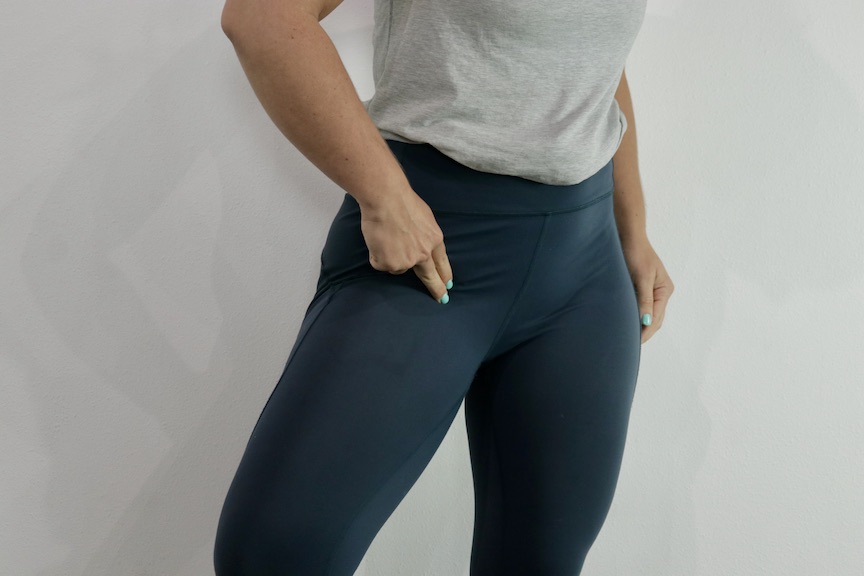
Can I run with a sports hernia?
Running straight at slower paces may not be painful, yet increasing speed and changing directions may improve symptoms. Complete avoidance of ambulation is not advised, nor is complete bed rest. Too much inactivity will decondition the rest of your body and make a return to total activity more challenging. Walking may be the easiest way to keep your body from becoming deconditioned.
How do I know if I have a sports hernia or a pulled groin?
A physical examination of the spine, hip, and abdominal wall will yield a working diagnosis. Investigating all of these regions is essential to rule in and out other possible reasons for groin and abdominal pain.
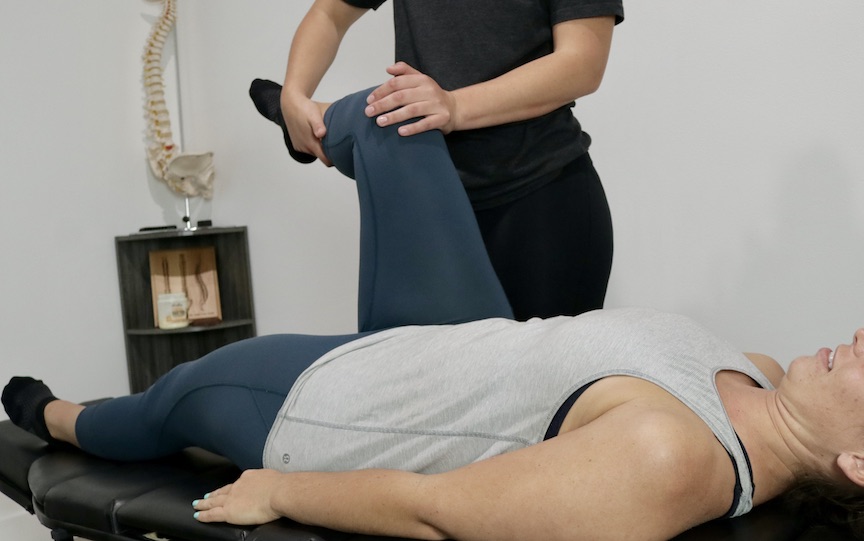
Works Cited
- Ahumada LA, Ashruf S, Espinosa-de-los-Monteros A, et al. Athletic pubalgia: Definition and surgical treatment. Ann Plast Surg 2005;55:393–6.
- Emery, Carolyn A., Willem Meeuwisse H., and John Powell W. “Groin and Abdominal Strain Injuries in the National Hockey League.” Clinical Journal of Sport Medicine3 (1999): 151-56. Web.
- Farber AJ, Wilckens JH. Sports hernia: Diagnosis and therapeutic approach. J Am Acad Surg 2007;15:507–14.
- Harmon KG. Evaluation of groin pain in athletes. Curr Sports Med Reports 2007;6:354–61.
- Hemingway AE, Herrington L, Blower AL. Changes in muscle strength and pain in response to surgical repair of posterior abdominal wall disruption followed by rehabilitation. Br J Sports Med 2003;37:54–8.
- Holmich P, Uhrskou P, Ulnits L, et al. Effectiveness of active physical training as treatment for long-standing adductor- related groin pain in athletes: Randomised trial. Lancet 1999;353:439–43.
- Holmich P. Long-standing groin pain in sportspeople falls into three primary patterns, a ‘‘clinical entity approach’’: A prospective study of 207 patients. Br J Sports Med 2007;41:247–52.
- Meyers WC, Lanfranco A, Castellanos A. Surgical management of chronic lower abdominal and groin pain in high-performance athletes. Curr Sports Med Reports 2002;1:301–5.
- Nam A, Brody F. Management and therapy for sports hernia. Am Coll Surg 2008;206:154–64
- Paluska SA. An overview of hip injuries in running. Sports Med 2005;35:991–1014.
- Srinivasan A, Schuricht A. Long-term follow-up of laparoscopic preperitoneal hernia repair in professional athletes. J Laparoendoscop Adv Surg Tech 2002;12:101–6.
- Van Veen RN, de Baat P, Heijboer MP, et al. Successful endoscopic treatment of chronic groin pain in athletes. Surg Endosc 2007;21:189–93.
- Caudill, P., J. Nyland, C. Smith, J. Yerasimides, and J. Lach. “Sports Hernias: A Systematic Literature Review.” British Journal of Sports Medicine12 (2007): 954-64. Web.
- Verrall GM, Hamilton IA, Slavotinek JP, et al. Hip joint range of motion reduction in sports-related chronic groin injury diagnoses as pubic bone stress injury. J Sci Med Sport 2005;8:77–84.
- Verrall GM, Slavotinek JP, Barnes PG, et al. Hip joint range of motion restriction precedes athletic chronic groin injury. J Sci Med Sport 2007;10:463–6.
Kolar P, Sulc J, Kyncl M, Sanda J, Cakrt O, Andel R, Kumagai K, Kobesova A. Postural function of the diaphragm in persons with and without chronic low back pain. J Orthop Sports Phys Ther. 2012 Apr;42(4):352-62. Rambani, Rohit. “Loss of Range of Motion of the Hip Joint: a Hypothesis for Etiology of Sports Hernia.” Muscles, Ligaments and Tendons Journal, 2015, doi:10.11138/mltj/2015.5.1.029. McGill, Stuart. “Core Stability: “Fascial Raking” to Stimulate Abdominal Wall Activation for Ultimate Performance.” Http://www.dragondoor.com/pdf/331.pdf. N.p., n.d. Web. 2 Jan. 2017.

